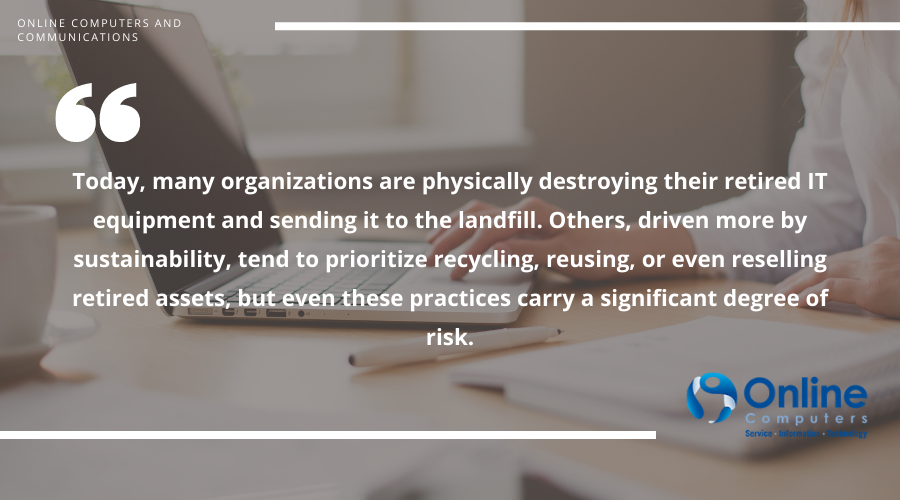The role of corporate social responsibility (CSR)
CSR is a type of self-regulation that organizations follow to minimize their environmental impact, reduce costs, and improve their brand image. CSR has an important role to play in the disposal of retired IT assets. After all, sending old hardware straight to the landfill is hardly a sustainable or environmentally friendly approach. Yet despite the fact that most organizations now have a CSR policy, only a very small amount of retired hardware is being properly reused. To counter these issues, companies must include the sustainable disposition of their used assets in their CSR program.Secure IT asset disposition (SITAD) strategy
Most end-of-life equipment still has a potential use and therefore carries some value. If that’s the case, then it should be reused or resold to recuperate a small part of your investment. But this approach also carries a serious information security risk without proper planning or policy. Simply formatting a retired data-bearing device like a hard drive, removable storage media, or mobile device isn’t going to safely delete any of the data on it. Anyone who gets their hands on the retired device can simply recover deleted data or formatted storage partitions, thanks to widely available data recovery software. That’s the last thing you want to happen if the devices you’re retiring contain sensitive information like trade secrets, payment details, or data subject to regulatory compliance. Your SITAD policy should clearly set the standards for safe data disposal, and it doesn’t have to involve the physical destruction of the device either. For example, drives can be encrypted, or you can overwrite data in multiple passes to ensure it can never be recovered. Using these methods, you can resell or reuse the device without adding risk. By contrast, degaussing and physical destruction make this impossible.
What are the benefits of sustainable SITAD?
Sustainable SITAD serves two main purposes. It lets you reuse, resell, or donate your used IT assets, and it better aligns with your commitment to environmental sustainability. Although used IT assets aren’t worth a lot, you can reclaim some cash or even find a new use for the retired hardware yourself. Alternatively, you can donate it to those in need, such as educational organizations in developing countries. Together, these factors are beneficial for both your company and for your brand at large. After all, organizations with strong CSR policies tend to be much more attractive to partners and customers.How can cloud computing and managed services help?
With technology evolving at a breakneck pace, the sheer amount of old hardware being retired is quite alarming, and it’s showing no signs of slowing. This is one of the many reasons why companies are reducing their reliance on hardware by having their computing workloads and data storage handled in cloud data centers instead. With a managed computing infrastructure, you can greatly reduce the technology burden on your in-house team, including the disposal of retired hardware. Instead, these things will largely be managed by a third party, and there won’t be any need to maintain, upgrade, and replace in-house servers or workstations. Online Computers empowers businesses to perform better with more sustainable and scalable technology solutions. Contact us today to schedule your first strategy session.Ensure a productive remote workforce!
Enter your name and email address on the respective fields on the right to receive our FREE guide to ensuring your staff's productivity while working remotely.




